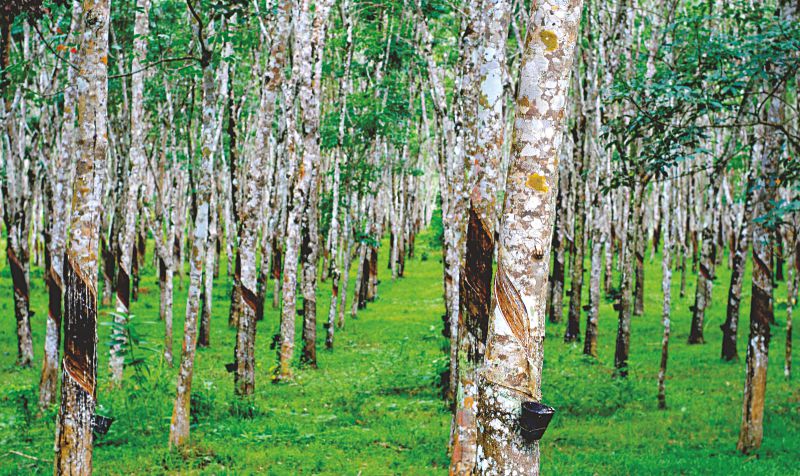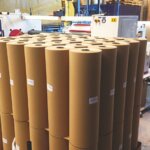Fibre length is an important criterion for pulp and paper production. This necessitates different breeding approach if the objective is pulp and paper production from the rubber tree.
October 17, 2018

More than seven lakh hectares is under rubber tree plantation in India. Currently, rubber growers are facing difficult times with decline in rubber prices, reduced returns and high labour costs. New developments in rubber science can help farmers overcome these problems to a certain extent.
Recently, scientists from the Rubber Research Institute of India, Kottayam have taken initial steps towards breeding dual purpose rubber clones. They have studied wood properties variation and heritability of 11 progenies obtained from crossing superior latex yielding rubber clones which are cultivated on large scale.
The wood characteristics like fibre length, fibre diameter, lumen diameter and thickness of fibre wall determine structural, physical and chemical properties of wood. So information on their genetic control and heritability becomes vital in planning tree improvement programmes.
Based on the results of this study, scientists have concluded that there is a positive genetic relationship between rubber tree growth traits and fibre diameter as well as fibre wall thickness.
Therefore, selection for good growth vigour could lead to improved fibre traits. However, they also state that fibre length was negatively correlated to tree growth. Hence, it may not be possible to simultaneously attain vigorous growth and longer fibres, researchers have reported in the study published in journal Tree Genetics & Genomes.
Fibre length, however, is an important criterion for pulp and paper production. This necessitates different breeding approach if the objective is pulp and paper production from the rubber tree. “If not as a sole source, fast growing rubber clones can be a potential source for pulp and paper industry, which has not been exploited so far,” explained Dr Narayanan Chaendaekattu, who led the research study. In order to use rubber wood for paper and pulp, there is a need to sort out latex depositing issue on the pulp. This might need an interdisciplinary research.
Based on this study and other existing information, scientists are confident they can manipulate wood traits suited to for pulp and paper production. “As factors like flexibility coefficient and the Runkel ratio in rubber wood have good heritable nature, we can definitely work on it. This would require a dedicated long-term breeding programme, which we have already initiated at our institute,” he added.
In addition, the conventional method of developing clones through hybridization and selection in rubber trees is a long-term programme. “We expect stable and consistent results in the long run and there is no short-cut,” said Dr Chaendaekattu. This research highlights the significance of tree breeding programmes for improving productivity and it also necessitates the need for understanding the basics before initiating tree breeding projects aimed at increasing productivity.
(Excerpts from an article ‘Breeding dual purpose rubber trees’ in the Hindu Business Line).



